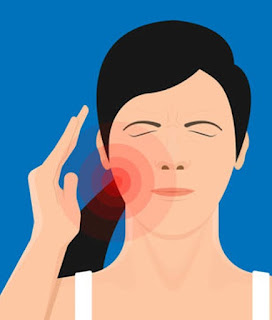The offshoots of JN.1 in the Evolutionary Trajectory of COVID-19
While the current SARS-COV-2 viral activity levels may seem reassuring (back to the levels seen in October-November 2023), the evolving world of JN.1 offshoots, where the next generation of variants is taking shape, presents a compelling case for anticipating the potential challenges that lie ahead.
From the widespread presence of JN.1.16 across continents to the emerging dominance of JN.1.13 in the U.S., the current variant landscape is rapidly shifting, although the potential implications for the future are not quite clear.
The roots of the pandemic can be traced back to lineage A, with many initial sequences originating from China and subsequently spreading globally, including to regions such as South East Asia, Japan, South Korea, Australia, the USA, and Europe. Lineage B followed as the second major haplotype, with subsequent evolutions leading to the emergence of various sublineages.
In 2020, we witnessed the emergence of variants such as Alpha (B.1.1.7) and Delta (B.1.617.2). The Omicron variant (B.1.1.529) identified in late 2021 marked a significant turning point, causing the largest peak in infectiousness in early 2022. Its major offshoots, BA.1 and BA.2, paved the way for the rise of XBB and other sublineages. Following the initial surge of the original Omicron BA.1 variant, there has been a consistent rise in cumulative infections with public health efforts seemingly playing down mitigation measures.
In September 2023, from the less prevalent BA.2.86 lineage, a new offshoot emerged: JN.1. By late December 2023, JN.1 had become predominant, rapidly outpacing other variants to account for a substantial proportion of SARS-CoV-2 infections globally. With over 30 mutations in the spike protein, including the notable L455S mutation, JN.1 demonstrated heightened immune escape and infectivity, leading to its widespread dissemination. By December 25, 2021, it accounted for 58.6% of the COVID-19 cases reported in the U.S. By late December 2023, it had become predominant, rapidly outpacing other variants to account for a substantial proportion of SARS-CoV-2 infections globally. By the end of February, over 97% of variant sequences detected in US in wastewater were JN.1. With over 30 mutations in the spike protein, including the notable L455S mutation, JN.1 demonstrated heightened immune escape and infectivity, leading to its widespread dissemination. The effectiveness of infection with prior variants in preventing reinfection with JN.1 variant was estimated at 1.8% (95% CI: -9.3-12.6%), declining rapidly from 82.4% (95% CI: 40.9 to 94.7%) within 3 to less than 6 months, reaching negligible levels after one year.
As the evolutionary trajectory of JN.1 variants continues to unfold, new designations such as JN.1.11.1.1 (BA.2.86.1.1, out of India) and JN.1.23 (S:K444R and Y453F, out of Brazil) are emerging in different geographic regions, signaling the arrival of second-generation JN.1s.
Lineages like JN.1.4, JN.1.7, JN.1.11.1, and JN.1.13 are exhibiting strong growth patterns, with JN.1.13 accounting for almost 10% of sequences in the Northeast region of the U.S. by March, according to Nowcast estimates. JN.1.4 variant dominates in traveler based genomic surveillance (15%), followed by JN.1.18 (~9%), JN.1.1 (6.7%), JN.1.11.1 (5.87%), KP.2 (4.12%); KP.2, JN.1.7 with JN.1.13.1 comprising only 0.65% of sequences. JN.1.16 seemed to dominate among flipper seqs uploaded in February from multiple International Airports, but quickly lost its lead. JN.1.11.1 is rapidly catching up and KP.2 (now arriving from multiple countries) seems to be even more powerful. According to CovSpectrum data KP.2 (JN.1.11.1.2; BA.2.86.1.1.11.1.2) has 333% growth advantage over JN.1, while it's 200% for KP.1.1 (JN.1.11.1.1.1; BA.2.86.1.1.11.1.1.1), and only 50% for JN.1.13.1 (BA.2.86.1.1.13.1).
JN.1 was slightly better evading immune system than previous leaders HV.1 & Eris (descendants of EG.5) , but many new lineages with enhanced immune evasion capabilities emerged since. The new KP.2 lineage of SARS-CoV-2 is showing signs of spread. It was first detected in samples collected in early January from Assam, India. It has since showed up in NZ, across North America, Europe and Asia. Multiple JN.1 branches including KP.1.1 and KP.2 harbor S:R346T+S:F456L mutations also known as FLiRT. KP.2 adds the Spike R346T mutation to JN.1.11.1. Globally, KP.2 was showing a very strong growth advantage of 14% per day (101% per week) over other Pirola variants since February. That predicts a crossover in late March. It looks like the best candidate for driving the summer wave, if one materializes.
At the 4-year mark since the WHO Pandemic Declaration, the U.S. averaged 3.5 cumulative infections per person, with a range of 2.5 to 4 (with few that still has not gotten the virus and some that had it 6-7 times or more). Probably 40-60% of transmission were asymptomatic and up to 10% were prolonged. If the current infection rate persists, it could reach an average of 7.3 infections per person in 4 years, with a range of 5.1 to 8.4.
As we navigate this new post-emergency pandemic phase, it is crucial that we continue global surveillance efforts to stay ahead of the evolving SARS-CoV-2 landscape.
REFERENCES
Yang S, Yu Y, Xu Y, Jian F, Song W, Yisimayi A, Wang P, Wang J, Liu J, Yu L, Niu X, Wang J, Wang Y, Shao F, Jin R, Wang Y, Cao Y. Fast evolution of SARS-CoV-2 BA.2.86 to JN.1 under heavy immune pressure. Lancet Infect Dis. 2024 Feb;24(2):e70-e72. doi: 10.1016/S1473-3099(23)00744-2. Epub 2023 Dec 15. Erratum in: Lancet Infect Dis. 2024 Jan 3;: PMID: 38109919.
Matthew E. Levy, Vanessa Chilunda, Phillip R. Heaton, Deran McKeen, Jason D. Goldman, Richard E. Davis, Cynthia A. Schandl, William B. Glen, Lisa M. McEwen, Elizabeth T. Cirulli, Dana Wyman, Andrew Dei Rossi, Hang Dai, Magnus Isaksson, Nicole L. Washington, Tracy Basler, Kevin Tsan, Jason Nguyen, Jimmy Ramirez, Efren Sandoval, William Lee, James Lu, Shishi Luo. XBB.1.5 mRNA COVID-19 Vaccination and Inpatient or Emergency Department Visits Among Adults Infected with SARS-CoV-2 JN.1 and XBB-Lineage Variants medRxiv 2024.03.05.24303796; doi: https://doi.org/10.1101/2024.03.05.24303796





Comments
Post a Comment